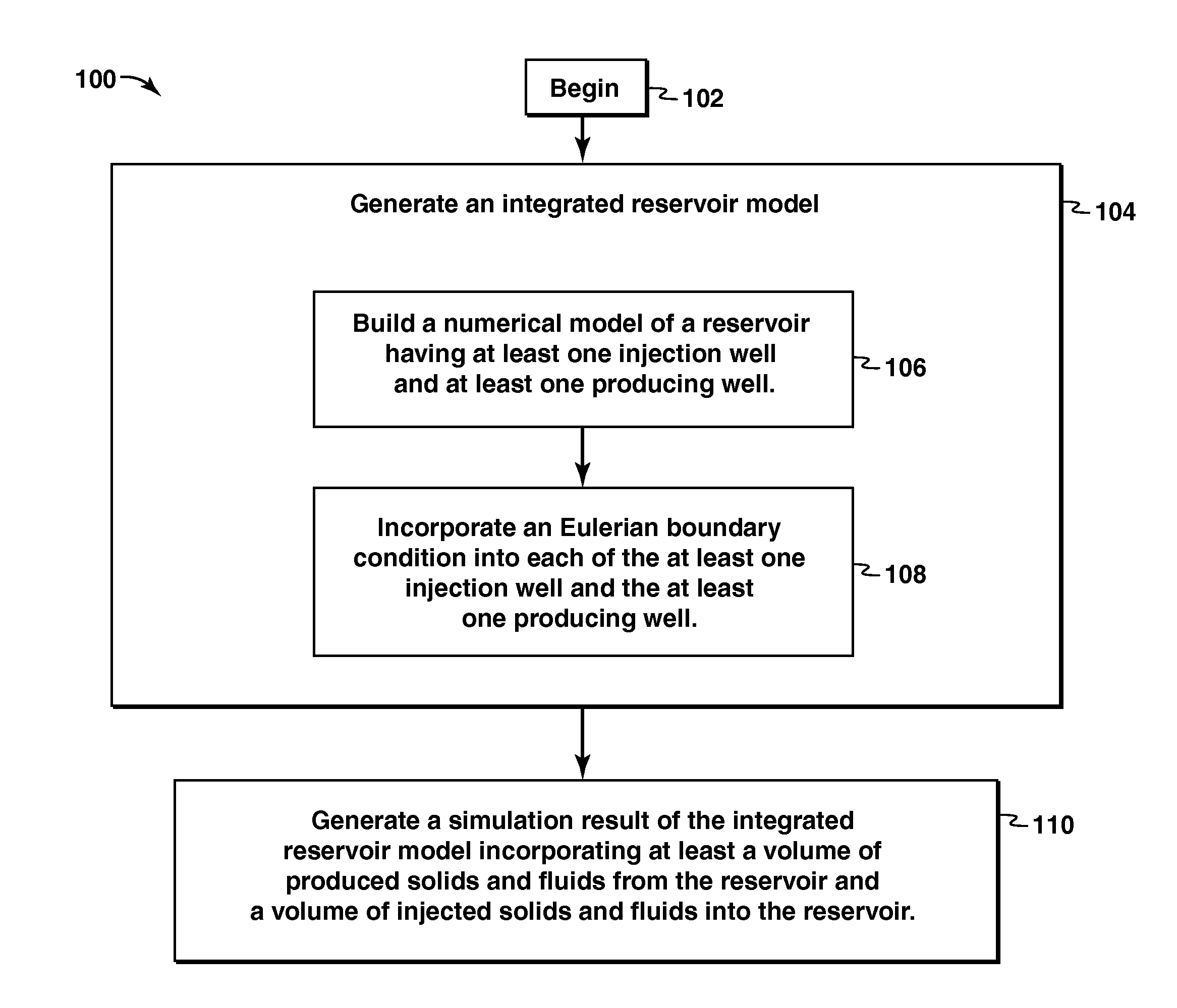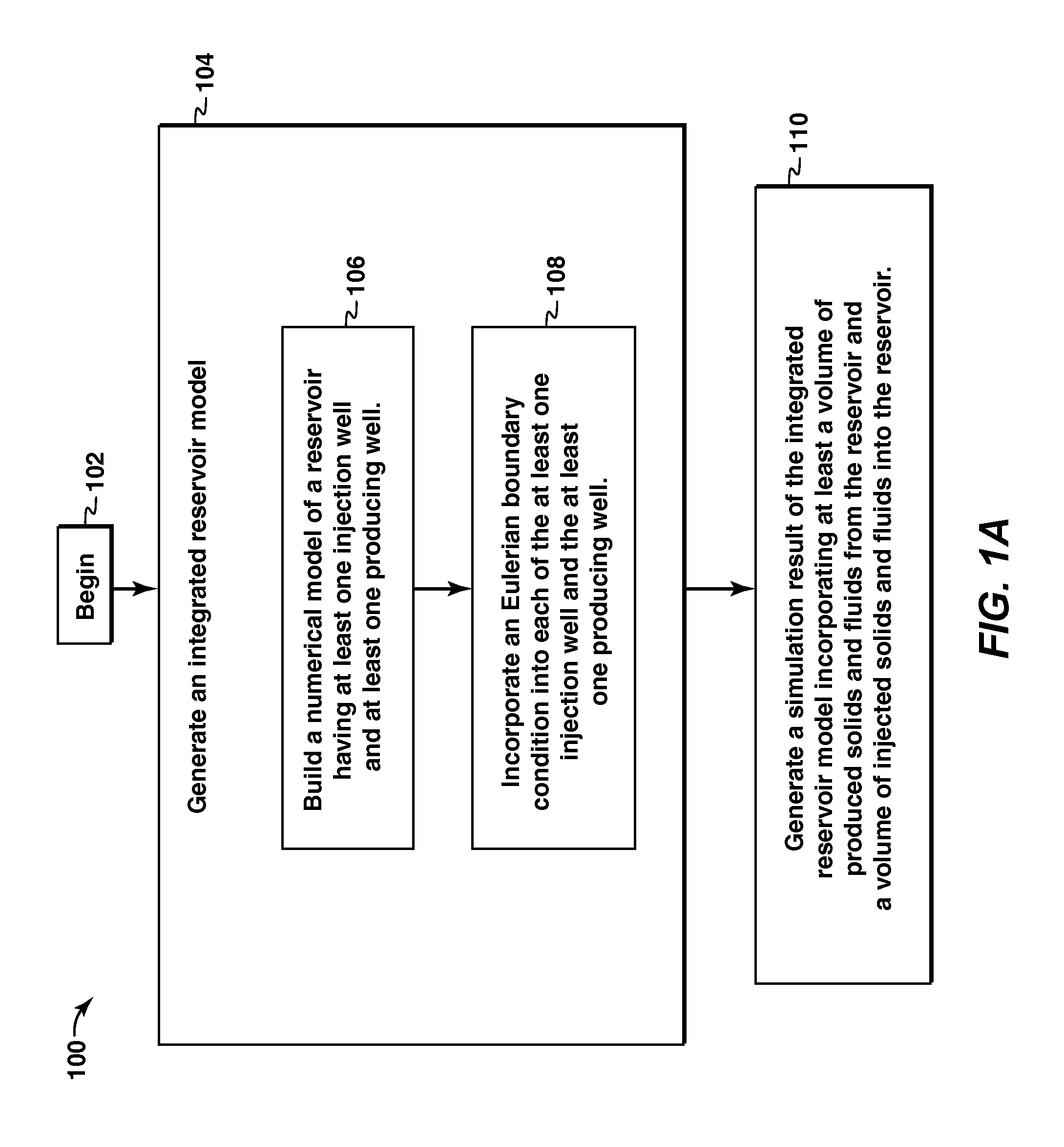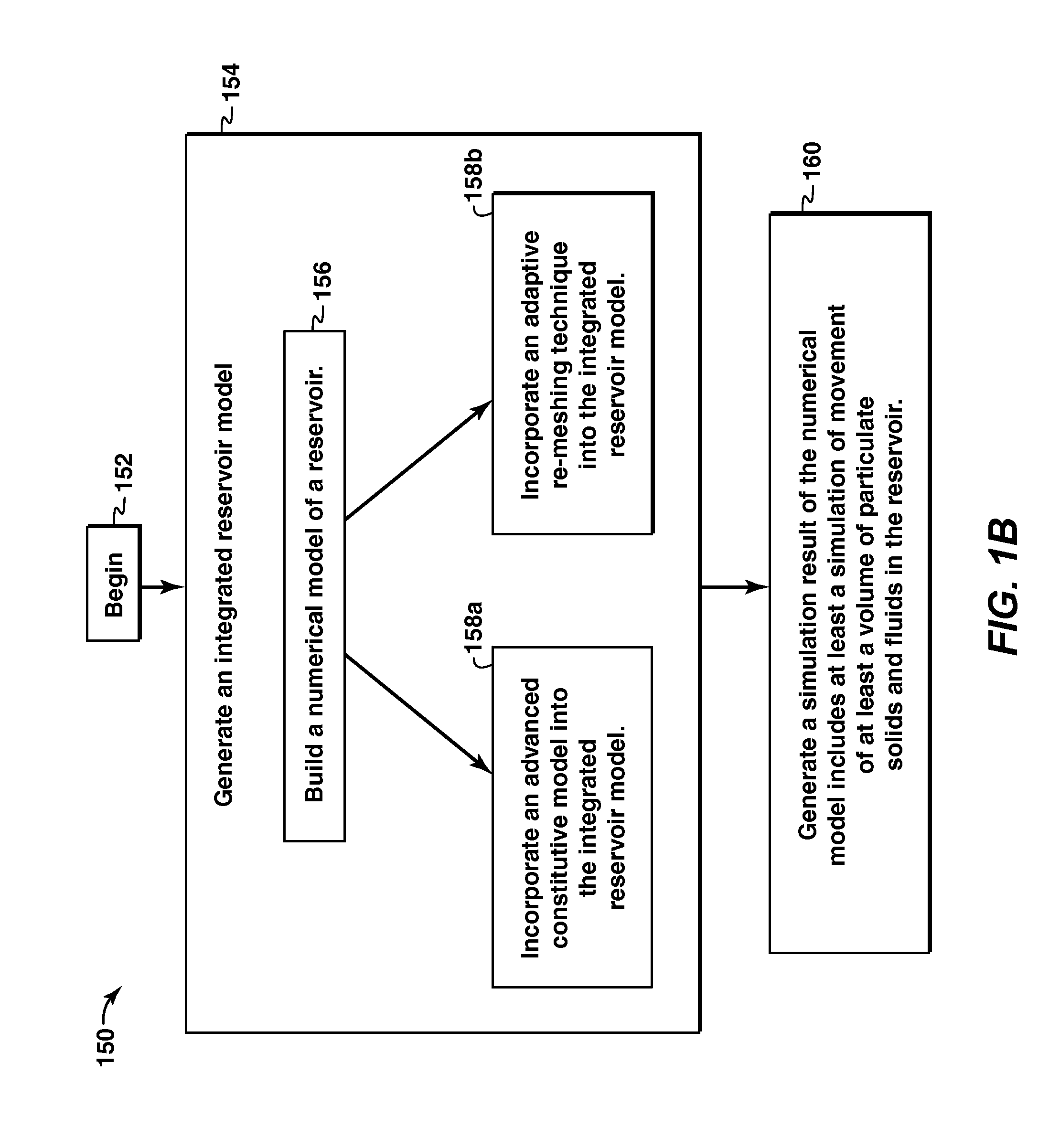Sand and Fluid Production and Injection Modeling Methods
a technology of fluid production and injection modeling, which is applied in the direction of analogue processes, instruments, and borehole/well accessories for specific applications, etc., can solve the problems of low recovery ratio, difficult operation and maintenance, and limited recovery of bitumen using water injection techniques
- Summary
- Abstract
- Description
- Claims
- Application Information
AI Technical Summary
Problems solved by technology
Method used
Image
Examples
examples
[0064]The following example shows the combined use of automatic mesh refinement 158b, EBC 108, and large strain formulations of geomechanics and fluid flow formulations 158a for simulating large sand / water production and injection volumes. The following analyses were carried out using the ELFEN (Rockfield 2007) suit of finite element software.
[0065]A hypothetical formation 300 of 60 m wide, 60 m long and 10 m thick was selected. There are four injectors 302 at four corners, 60 m from each other, and a producer 304 in the middle (e.g., a “five spot” pattern). A ⅛th symmetrical model 306 of the formation 300, using appropriate boundary conditions, is sufficient to represent the entire formation 300. The ⅛th symmetrical model 306 includes the overburden 308 and the underburden 310 above and below the reservoir 312. The radii of injector 302 and producer 304 were assumed to be 1 m.
[0066]The first step in the analyses is conditioning of reservoir 312, which can be simulated using solid-f...
PUM
 Login to View More
Login to View More Abstract
Description
Claims
Application Information
 Login to View More
Login to View More - R&D
- Intellectual Property
- Life Sciences
- Materials
- Tech Scout
- Unparalleled Data Quality
- Higher Quality Content
- 60% Fewer Hallucinations
Browse by: Latest US Patents, China's latest patents, Technical Efficacy Thesaurus, Application Domain, Technology Topic, Popular Technical Reports.
© 2025 PatSnap. All rights reserved.Legal|Privacy policy|Modern Slavery Act Transparency Statement|Sitemap|About US| Contact US: help@patsnap.com



